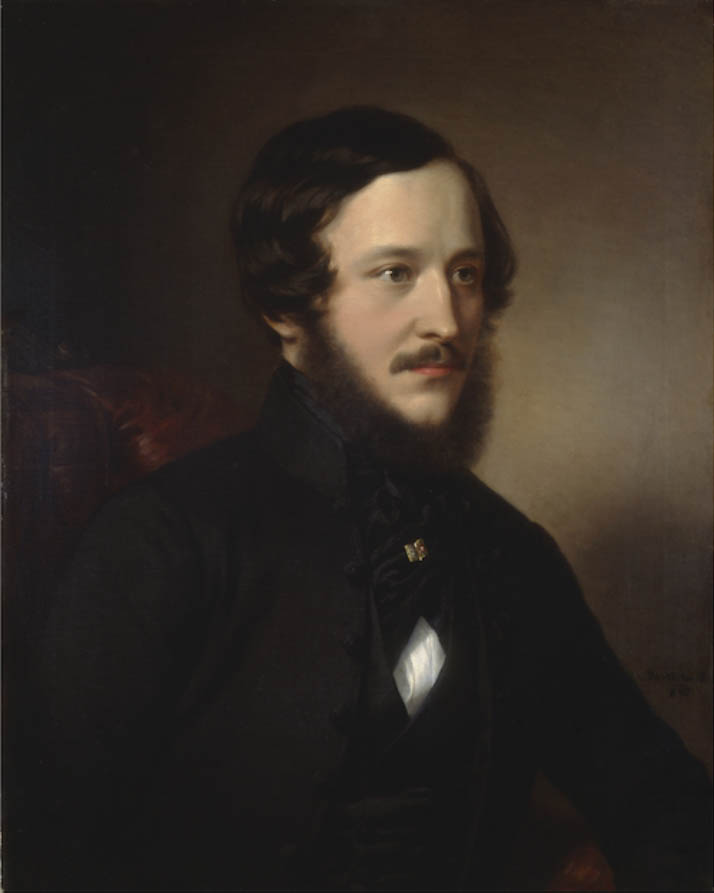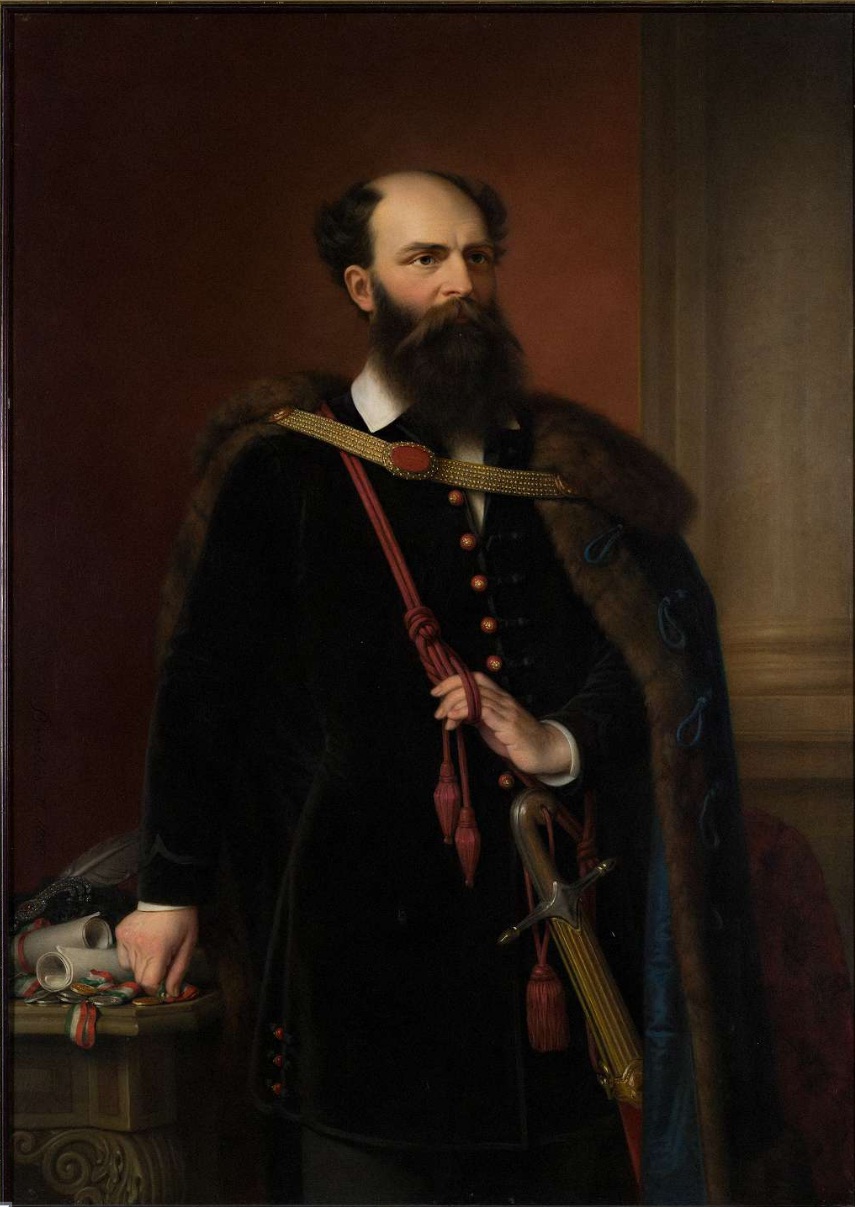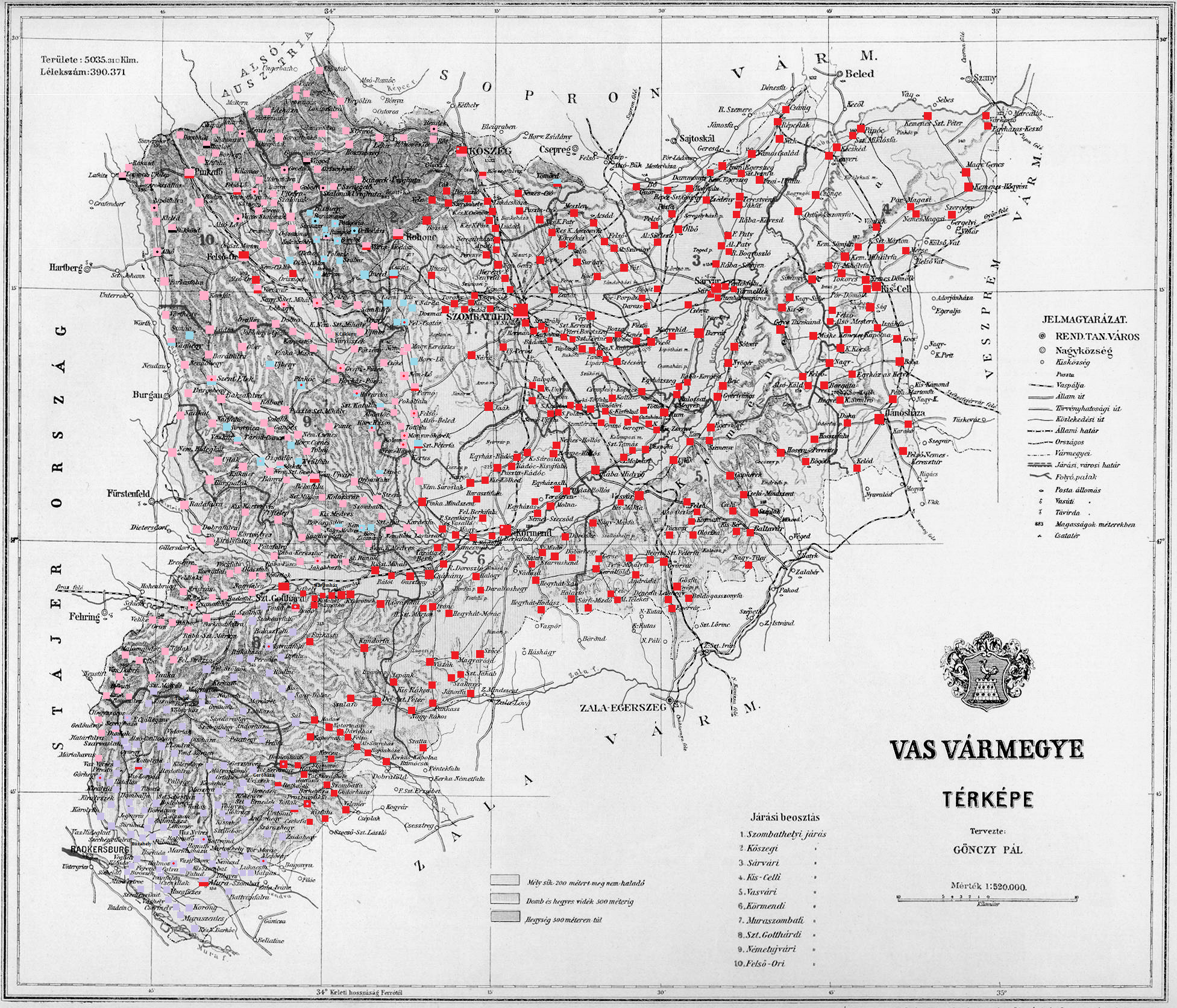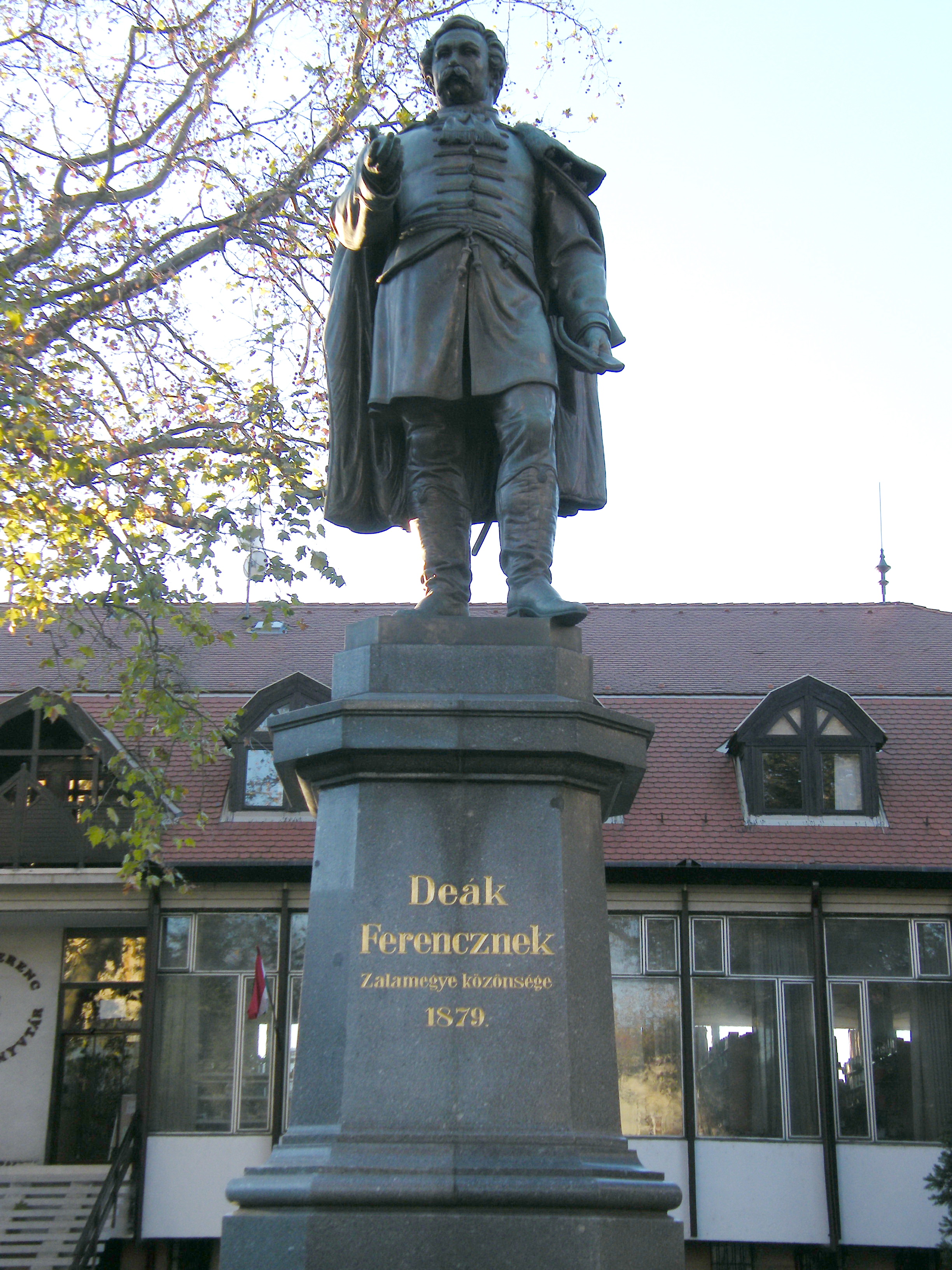|
József Eötvös
József baron Eötvös de Vásárosnamény (pronunciation: jɔ:ʒef 'øtvøʃ dɛ 'va:ʃa:rɔʃnɒme:ɲ 3 September 1813 – 2 February 1871) was a Hungarian writer and statesman, the son of Ignác baron Eötvös de Vásárosnamény and Anna von Lilien, who stemmed from an Erbsälzer family of Werl in Germany. Eötvös name is sometimes anglicised as Joseph von Eotvos. Biography The Baron József Eötvös de Vásárosnamény was born in the Hungarian aristocratic family Eötvös de Vásárosnamény. His father was the Baron Ignác Eötvös de Vásárosnamény (1786–1851), lord of the bedchamber, vice-chancellor of the Kingdom of Hungary, and his mother was the Baroness Anne von der Lilien (1786–1858). He received an excellent education and also spent many years in western Europe, assimilating the new ideas both literary and political, and making the acquaintance of the leaders of the Romantic school. On his return to Hungary he wrote his first political work, ''Pr ... [...More Info...] [...Related Items...] OR: [Wikipedia] [Google] [Baidu] |
Minister Of Education Of Hungary
The Minister of Human Capacities of Hungary ( hu, Magyarország emberierőforrás-minisztere) is a member of the Hungarian cabinet and the head of the Ministry of Human Capacities. The current minister of human capacities is Miklós Kásler. This page is a list of Ministers of Education of Hungary. Minister of Education (1848) Hungarian Kingdom (1848) Parties Ministers of Religion and Public Education (1848–1919) Hungarian Kingdom (1848–1849) Parties Hungarian State (1849) Parties ''After the collapse of the Hungarian Revolution of 1848, the Hungarian Kingdom became an integral part of the Austrian Empire until 1867, when dual Austro-Hungarian Monarchy was created''. Hungarian Kingdom (1867–1918) Parties Hungarian People's Republic (1918–1919) Parties Minister of Religion (1919) Hungarian People's Republic (1919) Parties Minister of Public Education (1919) Hungarian People's Republic (1919) Parties People's Commissars of Public Education (19 ... [...More Info...] [...Related Items...] OR: [Wikipedia] [Google] [Baidu] |
Vas County (former)
Vas (, , or ) was an administrative county (comitatus) of the Kingdom of Hungary. Its territory is now divided between Hungary, Austria and Slovenia. Geography Vas County shared borders with the Austrian lands Lower Austria and Styria and the Hungarian counties Sopron, Veszprém and Zala. It stretched between the river Mura in the south, the foothills of the Alps in the west and the river Marcal in the east. The Rába River flowed through the county. Its area was 5474 km² around 1910. History Vas County arose as one of the first ''comitatuses'' of the Kingdom of Hungary. In 1920 by the Treaty of Trianon, the western part of the county became part of Austria, and a small part in the southwest became part of the newly formed Kingdom of Serbs, Croats and Slovenes (from 1929 as Yugoslavia). The remainder stayed in Hungary. The former Yugoslavian part of the county was occupied and annexed by Hungary between 1941 and 1945 during World War II. In 1950, a small part of former ... [...More Info...] [...Related Items...] OR: [Wikipedia] [Google] [Baidu] |
Ferenc Deák (politician)
Ferenc Deák de Kehida (archaically English: Francis Deak, hr, Franjo Deák; 17 October 180328 January 1876) was a Hungarian statesman and Minister of Justice. He was known as "The Wise Man of the Nation" and one of the greatest figures of Hungary's liberal movement. He was an instrumental contributor to a number of major events in Hungarian history, including passing and support of the April laws, the Austro-Hungarian Compromise of 1867 and the Hungarian Nationalities Law (1868). While generally supporting reformist policies, he was well recognized for finding and negotiating reasonable middle ground compromises between various extremist political factions throughout his career. Early life and law career Born in Söjtör in the county of Zala, in southwestern Hungary, Deák belonged to an ancient noble family. His father was Ferenc Deák de Kehida (1761–1808), jurist, landowner, chief magistrate of the district (''főszolgabíró'') of Kapornak. His mother was the noble la ... [...More Info...] [...Related Items...] OR: [Wikipedia] [Google] [Baidu] |
Hungarian Revolution Of 1848
The Hungarian Revolution of 1848 or fully Hungarian Civic Revolution and War of Independence of 1848–1849 () was one of many European Revolutions of 1848 and was closely linked to other revolutions of 1848 in the Habsburg areas. Although the revolution failed, it is one of the most significant events in Hungary's modern history, forming the cornerstone of modern Hungarian national identity. In April 1848, Hungary became the third country of Continental Europe (after France (1791), and Belgium (1831)) to enact law about democratic parliamentary elections. The new suffrage law (Act V of 1848) transformed the old feudal parliament ( Estates General) into a democratic representative parliament. This law offered the widest suffrage right in Europe at the time. The crucial turning point of events was when the new young Austrian monarch Franz Joseph I arbitrarily revoked the April laws (ratified by King Ferdinand I) without any legal competence. This unconstitutional act irr ... [...More Info...] [...Related Items...] OR: [Wikipedia] [Google] [Baidu] |
Hungarian Language
Hungarian () is an Uralic language spoken in Hungary and parts of several neighbouring countries. It is the official language of Hungary and one of the 24 official languages of the European Union. Outside Hungary, it is also spoken by Hungarian communities in southern Slovakia, western Ukraine (Subcarpathia), central and western Romania ( Transylvania), northern Serbia ( Vojvodina), northern Croatia, northeastern Slovenia ( Prekmurje), and eastern Austria. It is also spoken by Hungarian diaspora communities worldwide, especially in North America (particularly the United States and Canada) and Israel. With 17 million speakers, it is the Uralic family's largest member by number of speakers. Classification Hungarian is a member of the Uralic language family. Linguistic connections between Hungarian and other Uralic languages were noticed in the 1670s, and the family itself (then called Finno-Ugric) was established in 1717. Hungarian has traditionally been assigned to ... [...More Info...] [...Related Items...] OR: [Wikipedia] [Google] [Baidu] |
Ágoston Trefort
Dr. Ágoston Trefort (pronunciation: a:gɔʃtɔn 'trɛfɔrt 7 February 1817 – 22 August 1888) was a Hungarian politician, who served as Minister of Religion and Education from 1872 until his death. He was the President of the Hungarian Academy of Sciences from 1885. Family He was born into a Hungarian Catholic family of Walloon origin in Homonna, Zemplén County, Kingdom of Hungary (today Humenné, Slovakia). His great-grandfather worked as a lawyer in Belgium, his medical officer grandfather came to Hungary in the 1770s. Ágoston's father was Ignác Trefort (1770–1831), a famous surgeon, and his mother was Tekla Beldovics (died 1829). They married in 1816, when Ignác's first wife died. They had three children: Ágoston, Antal (died in his infancy) and István (born 1825, year of death unknown). On 14 March 1847 he married the Hungarian noble lady Ilona Rosty de Barkócz (1826–1870), who was the daughter of Albert Rosty de Barkócz (1779–1847), jurist, landowner ... [...More Info...] [...Related Items...] OR: [Wikipedia] [Google] [Baidu] |
Venezuela
Venezuela (; ), officially the Bolivarian Republic of Venezuela ( es, link=no, República Bolivariana de Venezuela), is a country on the northern coast of South America, consisting of a continental landmass and many islands and islets in the Caribbean Sea. It has a territorial extension of , and its population was estimated at 29 million in 2022. The capital and largest urban agglomeration is the city of Caracas. The continental territory is bordered on the north by the Caribbean Sea and the Atlantic Ocean, on the west by Colombia, Brazil on the south, Trinidad and Tobago to the north-east and on the east by Guyana. The Venezuelan government maintains a claim against Guyana to Guayana Esequiba. Venezuela is a federal presidential republic consisting of 23 states, the Capital District and federal dependencies covering Venezuela's offshore islands. Venezuela is among the most urbanized countries in Latin America; the vast majority of Venezuelans live in the cities of ... [...More Info...] [...Related Items...] OR: [Wikipedia] [Google] [Baidu] |
Cuba
Cuba ( , ), officially the Republic of Cuba ( es, República de Cuba, links=no ), is an island country comprising the island of Cuba, as well as Isla de la Juventud and several minor archipelagos. Cuba is located where the northern Caribbean Sea, Gulf of Mexico, and Atlantic Ocean meet. Cuba is located east of the Yucatán Peninsula (Mexico), south of both the American state of Florida and the Bahamas, west of Hispaniola (Haiti/Dominican Republic), and north of both Jamaica and the Cayman Islands. Havana is the largest city and capital; other major cities include Santiago de Cuba and Camagüey. The official area of the Republic of Cuba is (without the territorial waters) but a total of 350,730 km² (135,418 sq mi) including the exclusive economic zone. Cuba is the second-most populous country in the Caribbean after Haiti, with over 11 million inhabitants. The territory that is now Cuba was inhabited by the Ciboney people from the 4th millennium BC with the Gua ... [...More Info...] [...Related Items...] OR: [Wikipedia] [Google] [Baidu] |
New Mexico
) , population_demonym = New Mexican ( es, Neomexicano, Neomejicano, Nuevo Mexicano) , seat = Santa Fe, New Mexico, Santa Fe , LargestCity = Albuquerque, New Mexico, Albuquerque , LargestMetro = Albuquerque metropolitan area, Tiguex , OfficialLang = None , Languages = English language, English, Spanish language, Spanish (New Mexican Spanish, New Mexican), Navajo language, Navajo, Keres language, Keres, Zuni language, Zuni , Governor = , Lieutenant Governor = , Legislature = New Mexico Legislature , Upperhouse = New Mexico Senate, Senate , Lowerhouse = New Mexico House of Representatives, House of Representatives , Judiciary = New Mexico Supreme Court , Senators = * * , Representative = * * * , postal_code = NM , TradAbbreviation = N.M., N.Mex. , area_rank = 5th , area_total_sq_mi = 121,591 , area_total_km2 = 314,915 , area_land_sq_mi = 121,298 , area_land_km2 = 314,161 , area_water_sq_mi = 292 , area_water_km2 = 757 , area_water_percent = 0.24 , ... [...More Info...] [...Related Items...] OR: [Wikipedia] [Google] [Baidu] |
Texas
Texas (, ; Spanish language, Spanish: ''Texas'', ''Tejas'') is a state in the South Central United States, South Central region of the United States. At 268,596 square miles (695,662 km2), and with more than 29.1 million residents in 2020, it is the second-largest U.S. state by both List of U.S. states and territories by area, area (after Alaska) and List of U.S. states and territories by population, population (after California). Texas shares borders with the states of Louisiana to the east, Arkansas to the northeast, Oklahoma to the north, New Mexico to the west, and the Mexico, Mexican States of Mexico, states of Chihuahua (state), Chihuahua, Coahuila, Nuevo León, and Tamaulipas to the south and southwest; and has a coastline with the Gulf of Mexico to the southeast. Houston is the List of cities in Texas by population, most populous city in Texas and the List of United States cities by population, fourth-largest in the U.S., while San Antonio is the second most pop ... [...More Info...] [...Related Items...] OR: [Wikipedia] [Google] [Baidu] |
Exploration
Exploration refers to the historical practice of discovering remote lands. It is studied by geographers and historians. Two major eras of exploration occurred in human history: one of convergence, and one of divergence. The first, covering most of ''Homo sapiens'' history, saw humans moving out of Africa, settling in new lands, and developing distinct cultures in relative isolation. Early explorers settled in Europe and Asia; 14,000 years ago, some crossed the Ice Age land bridge from Siberia to Alaska, and moved southbound to settle in the Americas. For the most part, these cultures were ignorant of each other's existence. The second period of exploration, occurring over the last 10,000 years, saw increased cross-cultural exchange through trade and exploration, and marked a new era of cultural intermingling, and more recently, convergence. Early writings about exploration date back to the 4th millennium B.C. in ancient Egypt. One of the earliest and most impactful thinkers of ... [...More Info...] [...Related Items...] OR: [Wikipedia] [Google] [Baidu] |







